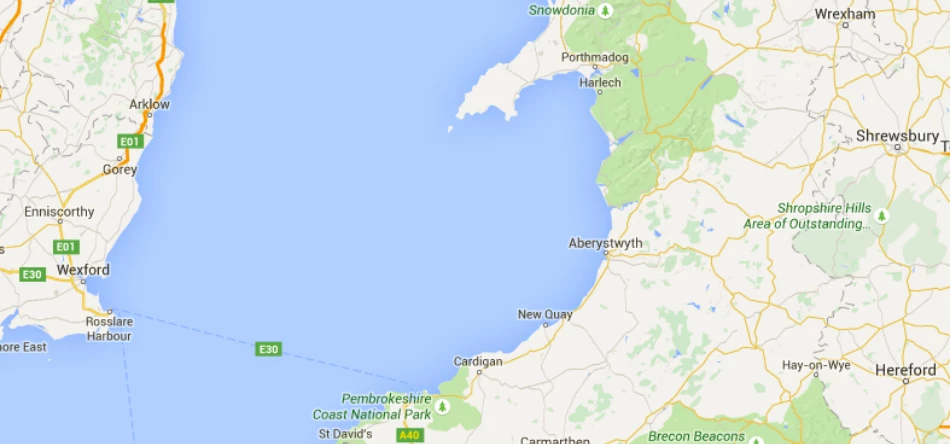
Partner Article
SuccorfishM2M Technology Aids World’s Largest Fisheries Impact Study
Innovative SuccorfishM2M fisheries technology has played an integral role in delivering the world’s largest ever fishing impact study.
Specialist hardware, software and vessel monitoring technology developed by North East company, SuccorfishM2M, was installed on commercial fishing vessels operating in and around Cardigan Bay in Wales and used to record highly valuable, locational data accurate to within two metres. This was supported by high resolution, one minute reporting in order to allow the most comprehensive, up-to-date activity data to be obtained.
The highly significant study was led by scientists from Bangor University in association with the Welsh Fishermen’s Association, Welsh Government and Natural Resources Wales. It focused on understanding the amount of scallop fishing within the Special Area of Conservation (SAC) considered to be sustainable without damaging the conservation features of the area. It concluded that sustainable scallop fishing COULD be possible within the Cardigan Bay SAC.
The research team used SuccorfishM2M’s SC2-VMS (vessel monitoring system) hardware and analysed 12 different fishing sites that were fished at different intensities by commercial scallop fishermen over an 18 months period. Activity results were compared to four different areas that were not fished at all.
Funded in part by the European Fishery Fund, findings from the study revealed that Cardigan Bay could withstand a certain level of fishing. More information will now be provided in order to further guide marine agencies in regard to implementing management measures, and if appropriate, setting the level of fishing to be permitted.
Tom Rossiter, Head of Marine at SuccorfishM2M commented, “This is the first study of its kind to enable marine authorities to determine the amount of fishing that the seabed within the SAC can tolerate, provide a clear way forward for local commercial fishermen and implement a truly sustainable approach to scallop fishing. This offers light to an industry that is facing huge pressures but in order for it to succeed, it must be supported by innovative monitoring technology.
“The study has demonstrated that with the most accurate monitoring and advanced data collection tools, sustainable fishing can be achieved. SuccorfishM2M has delivered a total fisheries solution that successfully incorporates both vessel monitoring technology as well as gear in, gear out capability, and this can be used to definitively pin-point when and where a fishing vessel is operating. Our SC2 vessel monitoring system unlocks huge potential for individual fisheries worldwide and provides authorities with a modern, technology-driven approach to achieving sustainable fishing and supporting management measures.”
Most fisheries are managed according to their target species, and in the Cardigan Bay study, this was scallop fishing. Researchers have stated that by setting two thresholds; one for seabed disturbance and one for scallops, this would provide a strong incentive for fishermen to disturb as little of the seabed as possible.
Tom Rossiter from SuccorfishM2M is a keynote speaker at this year’s World Seafood Congress at Grimsby in September 2015. He will be discussing the use of advanced fisheries technology and modern data collection tools and their impact within global commercial fisheries. Read more about SuccorfishM2M fisheries solutions here http://succorfish.com/fisheries/
For more information go to: www.succorfish.com or contact Tom Rossiter at SuccorfishM2M on +44 (0) 191 447 6883 or 07718 191347 or see www.succorfish.com
ENDS August 2015
This was posted in Bdaily's Members' News section by George Henricks .
Enjoy the read? Get Bdaily delivered.
Sign up to receive our popular morning National email for free.








 Powering a new wave of regional screen indies
Powering a new wave of regional screen indies
 A new year and a new outlook for property scene
A new year and a new outlook for property scene
 Zero per cent - but maximum brand exposure
Zero per cent - but maximum brand exposure
 We don’t talk about money stress enough
We don’t talk about money stress enough
 A year of resilience, growth and collaboration
A year of resilience, growth and collaboration
 Apprenticeships: Lower standards risk safety
Apprenticeships: Lower standards risk safety
 Keeping it reel: Creating video in an authenticity era
Keeping it reel: Creating video in an authenticity era
 Budget: Creating a more vibrant market economy
Budget: Creating a more vibrant market economy
 Celebrating excellence and community support
Celebrating excellence and community support
 The value of nurturing homegrown innovation
The value of nurturing homegrown innovation
 A dynamic, fair and innovative economy
A dynamic, fair and innovative economy
 Navigating the property investment market
Navigating the property investment market